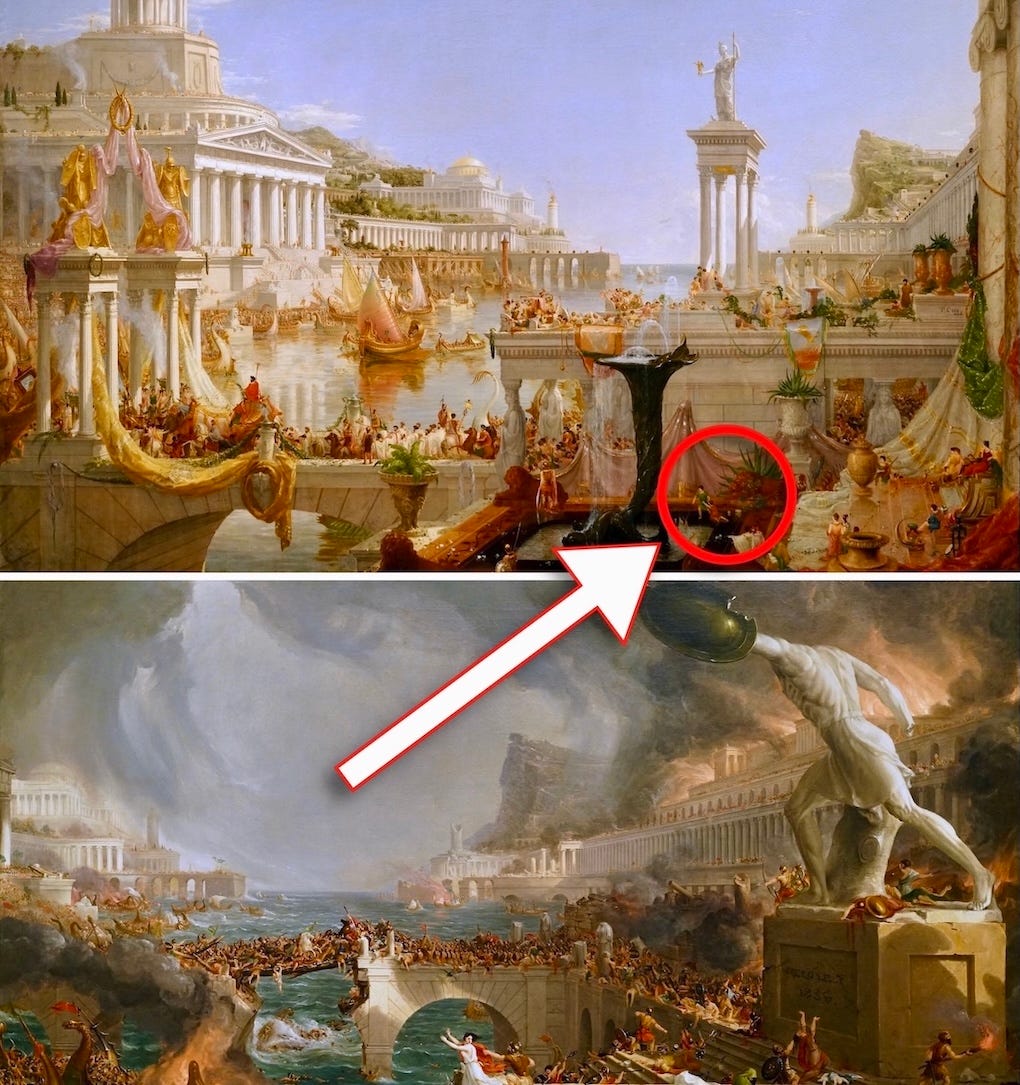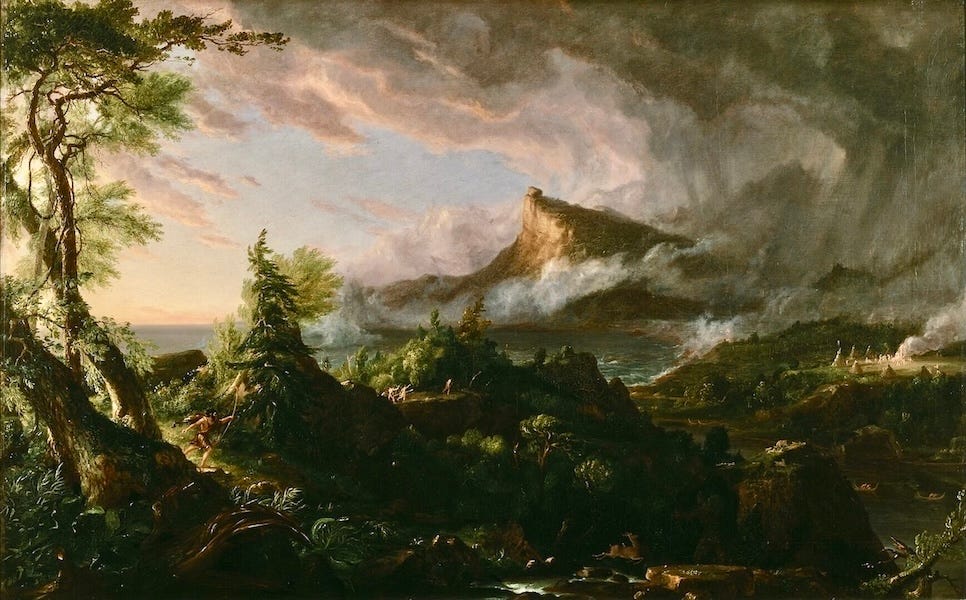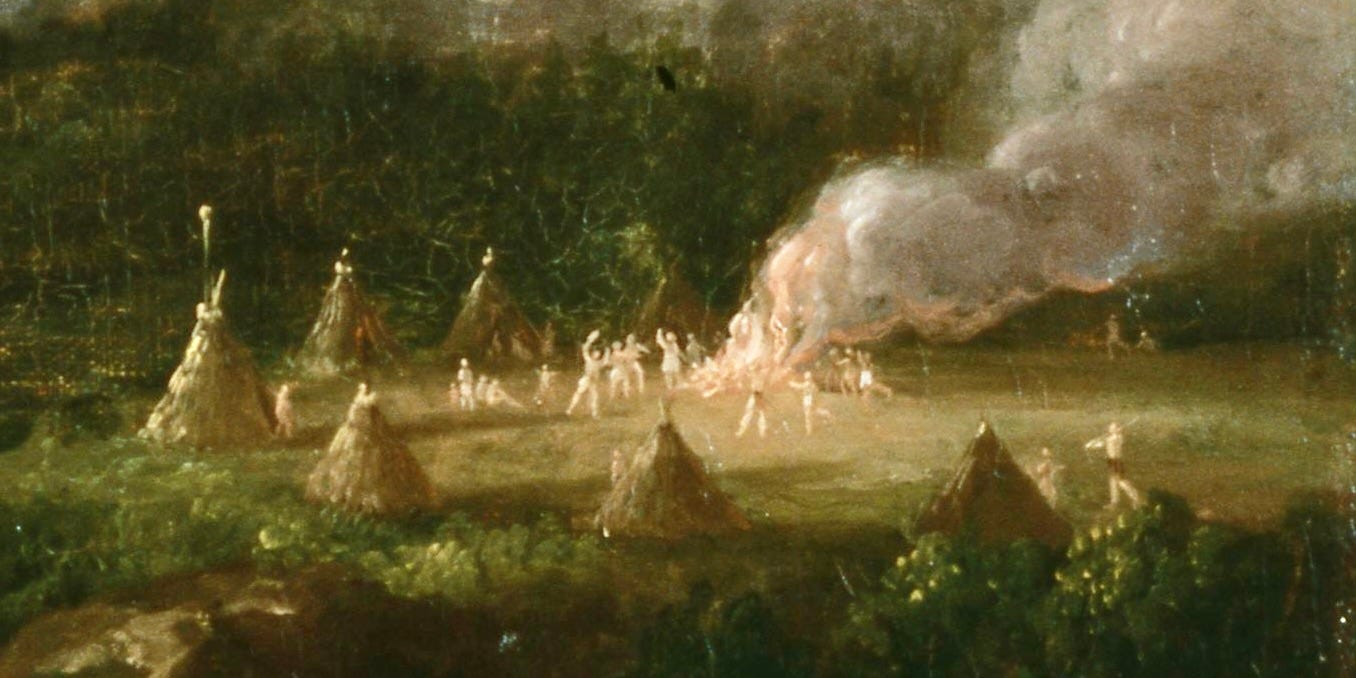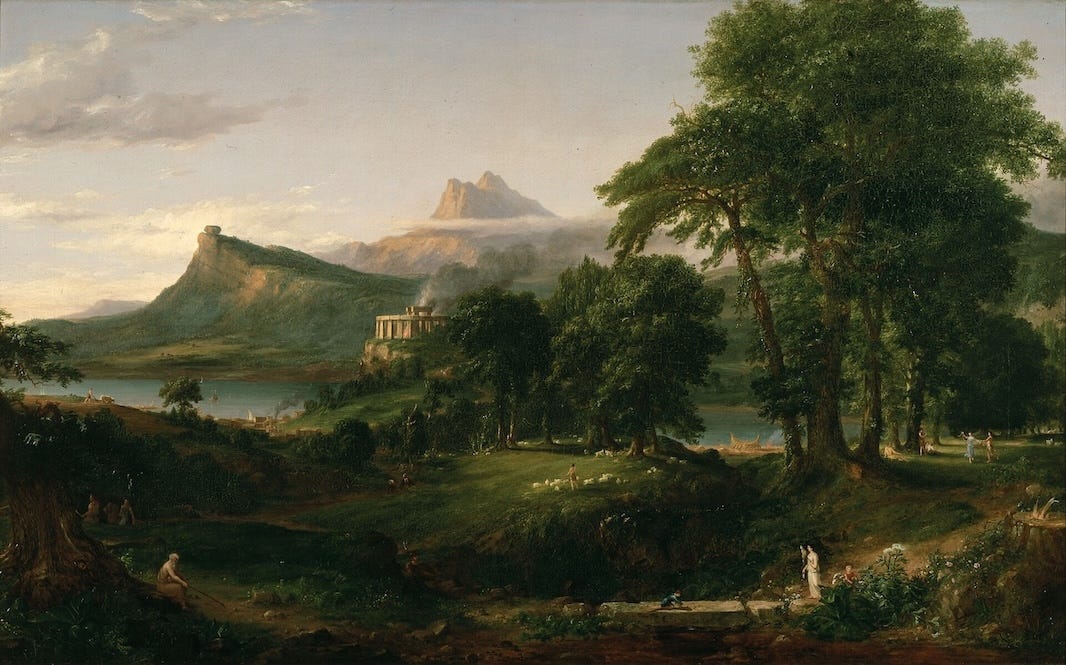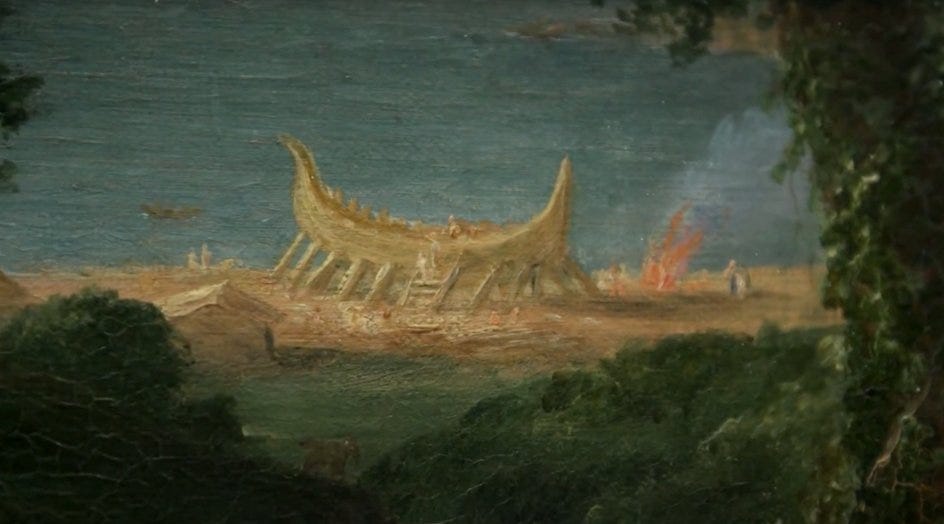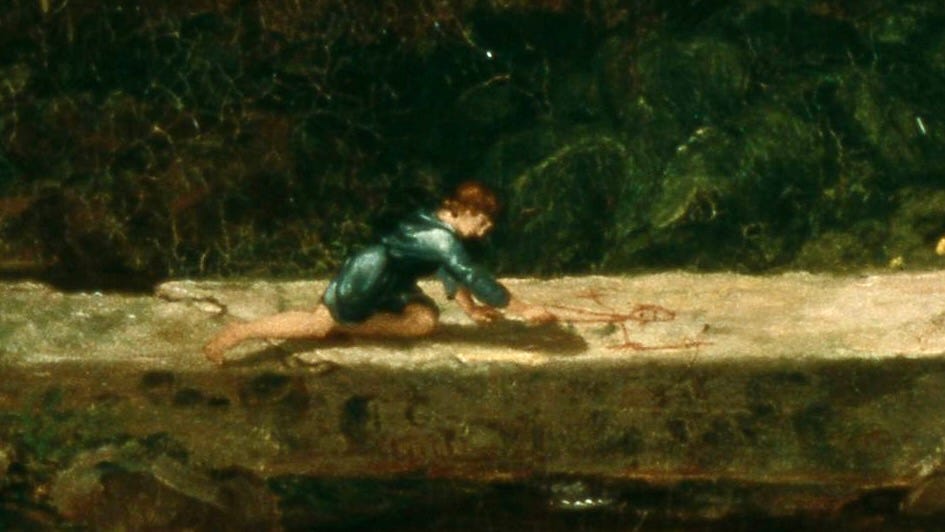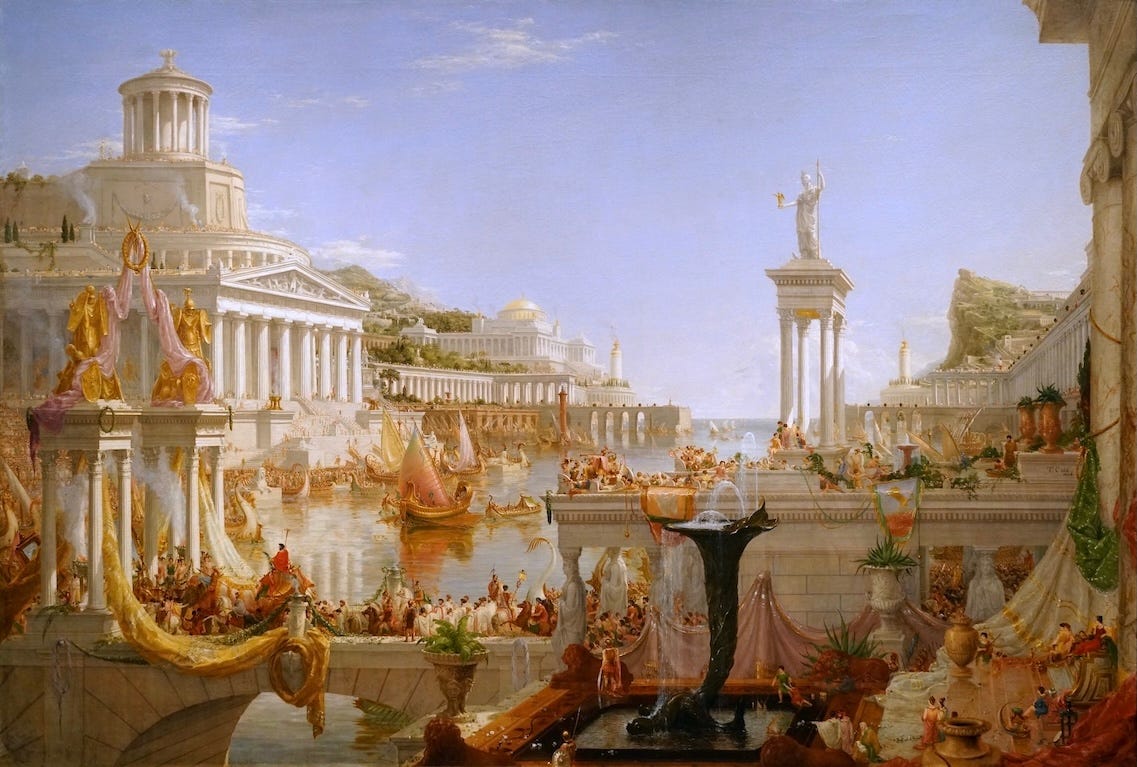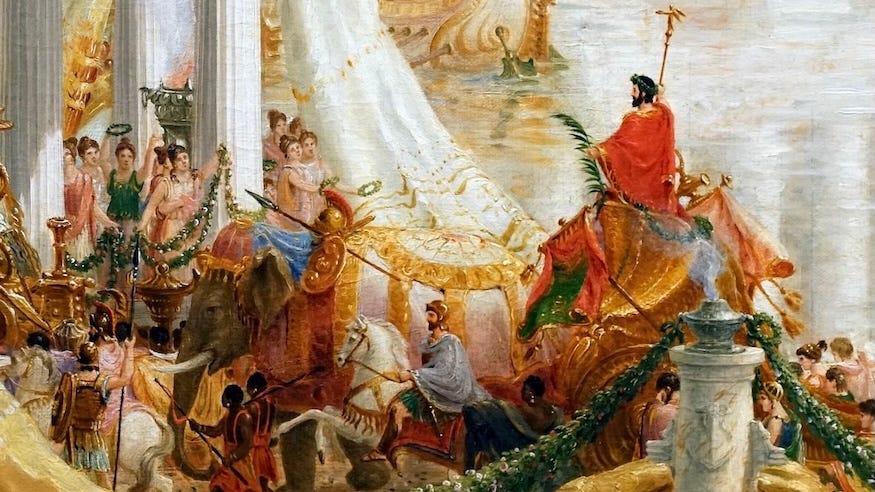Why Do Civilizations Collapse?
Thomas Cole's Course of Empire
No one ever told the tale of civilization as dramatically as Thomas Cole. Born in England in 1801, Cole spent most of his life in the U.S., where he became known for his expansive landscape paintings. But unlike other artists of the time, Cole’s pieces weren’t just celebrations of nature. They instead conveyed moral and philosophical messages to his intended audience: the citizens of an enthusiastic and fledgling new nation.
Few of Cole’s warnings were more dire than that of his five-piece masterwork The Course of Empire. In it, Cole documents the development of an imagined civilization from its humble beginnings in nature to the height of its imperial power, and finally to its violent collapse. It’s a reminder that no human empire lasts forever, but also a warning as to what brings about every empire’s destruction.
Today, we explore the five paintings — The Savage State, The Pastoral State, The Consummation of Empire, Destruction, and Desolation — that comprise Cole’s The Course of Empire series. We’ll look at the wisdom each one has to offer, and ask the most pressing question of all: which painting best represents where we find ourselves today?
Reminder: this is a teaser of our members-only deep dives.
To support our mission and get our premium content every week, upgrade for a few dollars per month. You’ll get:
Full-length, deep-dive articles every weekend
The entire archive of great literature, art, and philosophy breakdowns
Members-only podcasts and exclusive interviews
The Savage State
Cole begins his sequence with raw beginnings. The Savage State shows a wilderness under stormy skies, dense with forest and marsh. In the center of the painting a hunting party rushes forward, spears raised high as they chase their prey. Smoke curls from a fire where others dance on the right side of the frame, and where rudimentary huts mark the only sign of civilization.
Human life here is precarious — but at the very least, community has begun to form.
Taken in its entirety, the scene represents man at his most primal. The nature around him is untamed, unpredictable, and domineering. Existence depends on the strength of the group, but a sudden storm or a poor harvest could spell disaster. In other words, Cole reveals that civilization begins not in tranquility, but in the communal struggle for survival.
Yet begin it does. Boats in the river signify early technological developments, and the dance around the fire suggests the existence of shared rituals — the first steps towards culture. Overlooking it all is a rocky outcrop Cole will depict in all four of the following paintings, and which will be used to indicate the progress made, and eventually lost, by this new society.
So it is that from this raw foundation, the ascent of human ambition begins its course — but the storm clouds looming above warn that civilization is fragile, and instability remains always close at hand…
The Pastoral State
The second painting in The Course of Empire is a bucolic rendering of man living in harmony with nature. On the lefthand side of the painting, a farmer and his oxen plow the field. In the middle of the frame a shepherd herds his sheep, and on the right a young couple frolics to music played on a pipe.
The previously nascent hallmarks of culture are now well defined: a temple on the hill signifies religion, and the man in the bottom left corner appears to engage in math or philosophy. At first glance, it feels like a sort of golden age, and the painting’s sense of calm and balance reflects humanity living in harmony with nature. Yet a closer look at a few key details reveals that a major change is already in motion.
The stump of a felled tree on the right side of the painting is the first indicator. Whereas nature dominated man in The Savage State, man now strives to dominate nature. But what’s happening with the wood from the felled tree is even more interesting — a close look through the trees reveals a ship under construction. Though modest, it’s indicative of the civilization’s aspirations: expansion, trade, and conquest.
The final element of those aspirations is rendered even more obvious by the boy playing in the foreground. At first glance, he looks like he’s simply having fun drawing — but upon closer inspection, you see he’s illustrating a warrior with his sword drawn.
The “pastoral state” might be peaceful for now, but its days of pacifism are numbered…
The Consummation of Empire
In the picture No. 3, we suppose other ages have passed, and the rude village has become a magnificent city. The part seen occupies both sides of the bay, which the observer has now crossed…It is a day of rejoicing.
-Thomas Cole’s description of The Consummation of Empire
The third installment in The Course of Empire series takes the viewer to the other side of the river valley, as evidenced by the positioning of the temple (on the right in the previous painting, on the left in this one). Here the civilization is at the absolute apex of earthly glory: every inch of the city, from its marble colonnades to its gilded statues, exudes wealth, beauty, energy, and triumph.
Nature is no longer visible except in fragments, such as potted plants or the temple’s decorative vine. The natural world has been subdued and domesticated, and even the great rock outcropping, so prominent in the previous two paintings, now feels like a plaything. Viewed from behind on the right hand side of the painting, it provides all the evidence one could need that man is in control. For now, at least.
The central drama is a great procession reminiscent of Roman triumphs, which Cole describes as such:
The conqueror, robed in purple, is mounted in a car drawn by an elephant, and surrounded by captives on foot, and a numerous train of guards, senators, etc. – pictures and golden treasures are carried before him. He is about to pass beneath the triumphal arch, while girls strew flowers around.
What will it be, then, that brings down this great empire? Foreign invaders? Financial mismanagement? A natural disaster?
Cole’s answer is none of the above. To show what sows the seed of destruction in this empire — and in all empires — he includes one small detail in the painting. And it’s one you’d never see if you don’t know where to look…
Keep reading with a 7-day free trial
Subscribe to The Culturist to keep reading this post and get 7 days of free access to the full post archives.




